Summary: In this tutorial, you will learn how to develop the first simple but famous program, C Hello World.
A quick introduction to functions #
A function is a piece of code that does a specific task. A function accepts an input, processes the input, and returns the result
For example, the add(x, y) function accepts two numbers and returns the sum of them. If you pass 1 and 2 to the add(x, y) function, you’ll get 3 back as the result.
The C function concept is the same.
Since C is a procedural programming language, a C program consists of one or more functions. Also, a C program always starts with a special function called main().
That’s all about the function you should know for now. Let’s start using functions to develop the Hello World program.
The C Hello World program #
The following shows a simple C program that outputs the Hello, world! message to the screen:
#include <stdio.h>
int main()
{
printf("Hello world!\n");
return 0;
}
Code language: C++ (cpp)How it works.
First, the program starts with the following directive:
#include <stdio.h>Code language: C++ (cpp)Every C directive starts with a hash (#) sign. C uses this directive to load an external function library that is a group of reusable functions.
The program includes the stdio.h library that provides standard input/output functions. The printf() function is one of the functions provided by the stdio.h library.
The printf() function displays a message to an output, the screen in this example.
Second, you see the main() function:
int main() Code language: C++ (cpp)A C program starts with the main() function. The int stands for integer. It indicates that the main() function needs to return an integer.
The body of a function starts with the curly brace ({) that follows main() and ends with the curly brace (}).
Third, inside the main() function, we use the printf() function. The print() function accepts a sequence of characters as input and displays the text on the screen:
printf("Hello world!\n");Code language: C++ (cpp)The text within the quotes (“) is called a literal string in C.
The \n is a special character that represents the newline character. When the printf() function sees the \n inside of a string, it adds a new line to the output.
To return a value from a function, you use the return statement. For example:
return 0;Code language: C++ (cpp)This return statement returns 0, which indicates that the program ends successfully without any error.
Develop the C Hello World program with CodeBlocks IDE #
The following section will show you step-by-step running the C Hello World using CodeBlock IDE.
If you haven’t installed the CodeBlocks IDE, you can set it up by following the setting up C development environment tutorial. However, you can skip this section if you use a different IDE.
Step 1. Launch the CodeBlocks IDE and create a project from the menu File > New > Project…
Step 2. Select the Console application and click the Go button:
Step 3. Check the Skip this page next time checkbox and click the Next button.
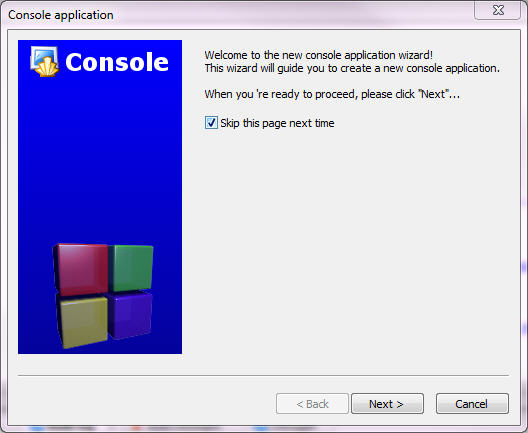
Step 4. Select the C language from the list and click the Next button:
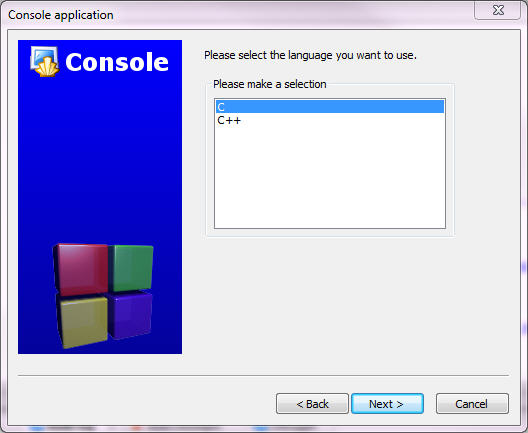
Step 5. Enter the Project title as HelloWorld and click the Next button:
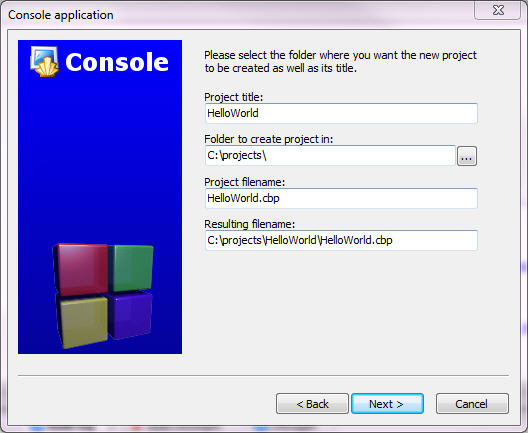
Step 6. Select the compiler to use. You need to accept the default options and click the Finish button:
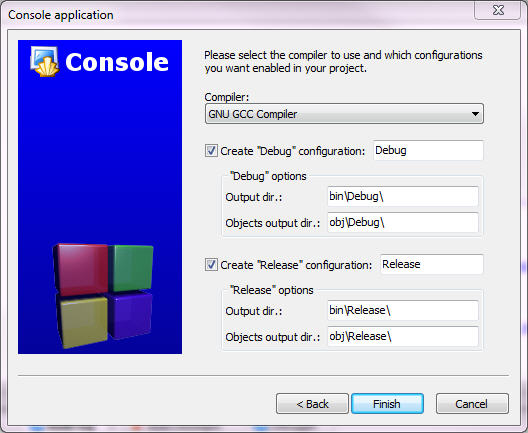
Step 7. The Codeblocks creates a new file called main.c with the following code:
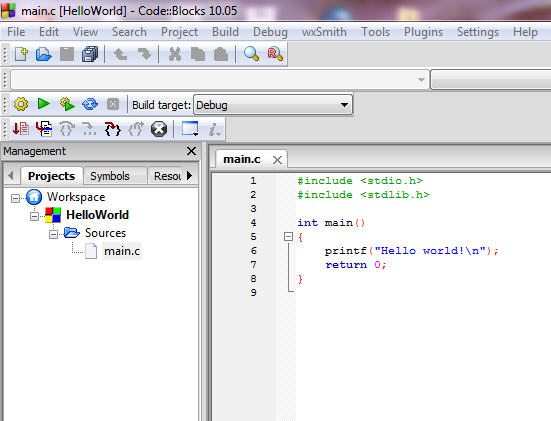
Step 8. Click the Build and Run option from the Build menu to build and run the program. You’ll see the new window on the screen that displays the Hello world! message:
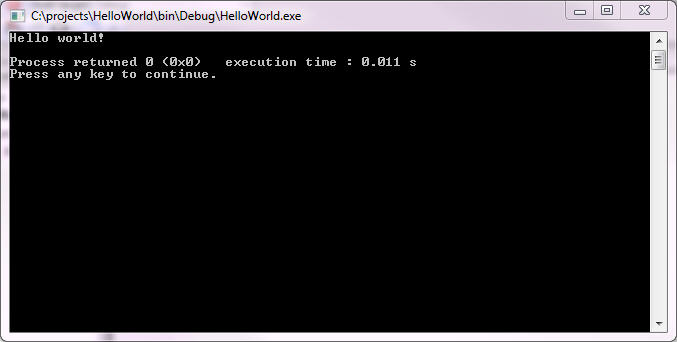
Congratulation! you have successfully developed and run the C Hello World program.
Summary #
- Use a directive to load an external library. A directive starts with the
#sign and is followed by the library name. - The
stdio.his the standard input/output library in C. - The
printf()function belongs to thestdio.hlibrary. It displays a message to the screen. - A C program always starts with the
main()function. - Use the
returnstatement to return a value from a function.